They say you can’t teach an old dog new tricks.
Well, email is probably the oldest dog in the marketing pack, and new tricks are here from Google. As well as changes in how the Gmail Promotions Tab works, Google have unveiled a new version of Postmaster Tools.
What’s changed in the Promotions tab?
For an industry supposedly dominated by “shiny-new-object syndrome”, marketers sure love to panic whenever a change comes around!
The Promotions tab in Gmail is already nearly 13 years old. It was described at the time of launch as “a marketer’s worst nightmare” by MIT Technology Review.
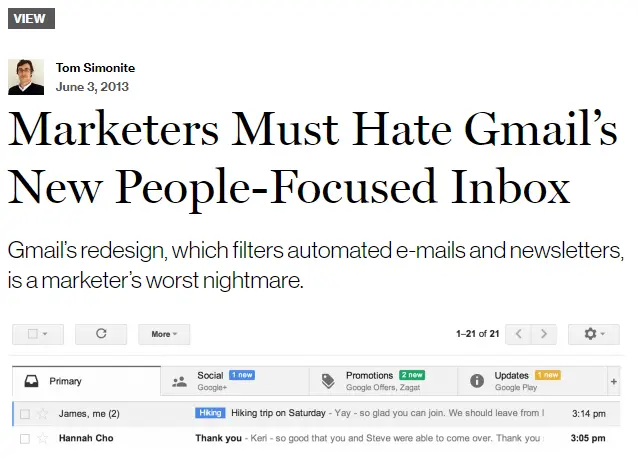
However, wiser heads immediately saw the potential benefit:
“While some Gmail users will be less likely to check out e-mails under the Promotions tab, others will give these ads more attention because they’ll purposefully seek them out when they’re bored or curious and their smartphones are handy.
“In effect, the tab provides a destination for people that’s not unlike getting a pile of Sunday circulars,” according to [Sucharita] Mulpuru. “There are actually people who love marketing emails–that’s the reason they still stay subscribed to email lists in the first place. It’s very opt-in and self-selected.”
– Gmail Segregates ‘Promotions’: Why This Won’t Slow Down the E-mail Marketing Machine (Time, 2013)
This latest change continues to Google’s overarching mission of making the inbox a nicer place for end users.
Rather than the universal default of Most Recent at the top of your inbox, you will be able to sort by Most Relevant. Gmail will take note of which senders you actually engage with, and prioritise those in this view.
What’s new in Postmaster Tools v2?
If you aren’t familiar with Postmaster Tools already, it’s an under-appreciated deliverability hero. Rather than forcing businesses to keep up with individual spam reports, Postmaster tools reports them en masse, tied to your sending activity. This allows you to see campaigns that riled your audience, without pointing the finger at individuals. More privacy for them, more actionable insights for you. Everybody’s better off.
New dashboard
It’s almost exactly 2 years since Yahoogle, when Google and Yahoo collectively announced a tightening of deliverability rules. The Postmasters V2 dashboard builds on this, showing clearly which policies your domain is reaching and where there’s work to do. DMARC is still only a strict requirement for bulk senders (5000+ messages per day), but its prominence on the board supports the idea that it will become mandatory for all senders in the near future.
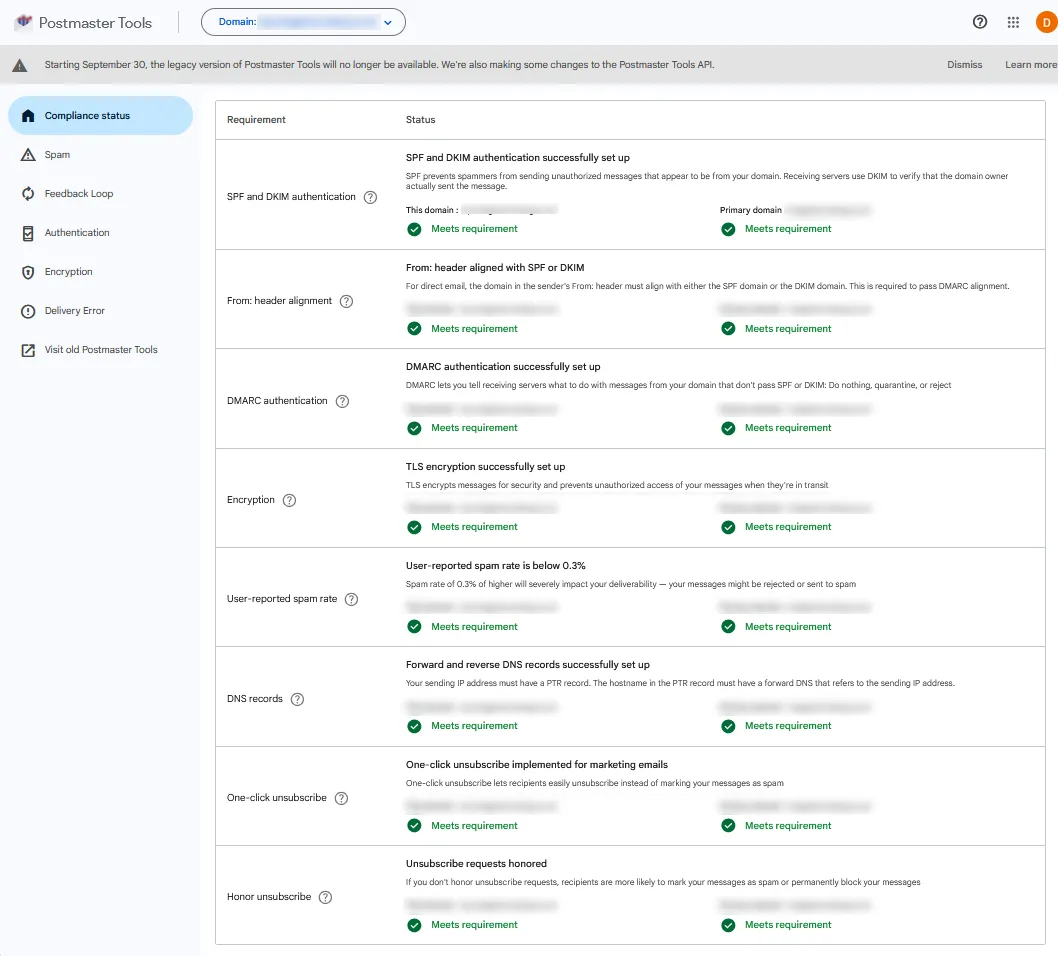
Clarity on spam and errors
The main advice hasn’t changed; a spam reporting rate below 0.3% is acceptable, and 0.1% is gold-star behaviour. You’ll be able to see all your spam report rates over a date period, so it should be simple to spot which campaigns and audiences need some attention.
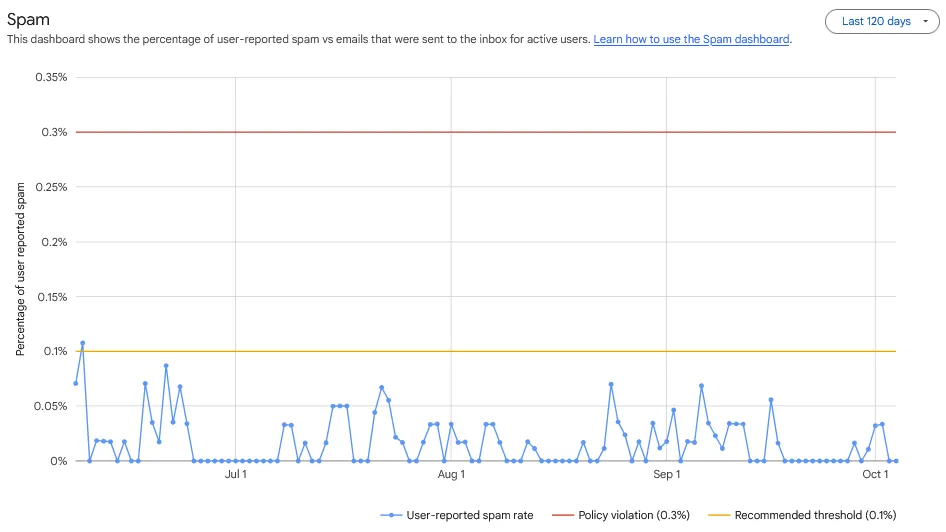
No more wondering why Google is slowing or throttling your sending! As well as a clear visual representation of your failure rate, you’ll see the error reasons. So rather than a panic when a campaign spikes your spam rate, you’ll see what you need to do to fix it.
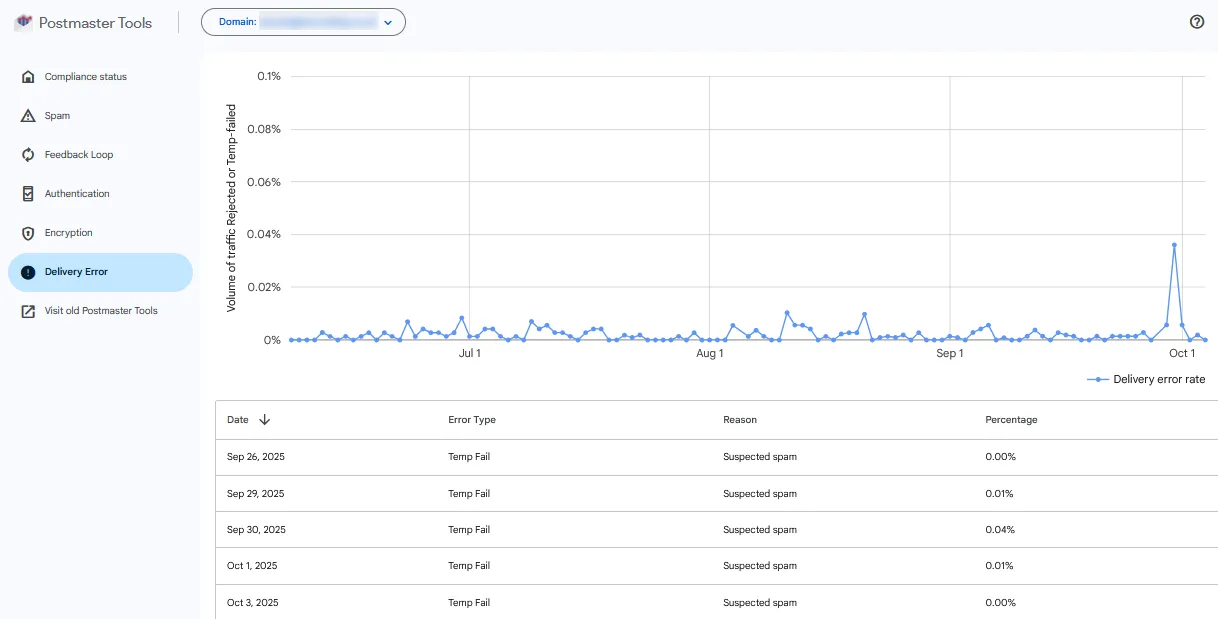
What’s gone?
Say goodbye to reputation reporting for both IP addresses and domains.
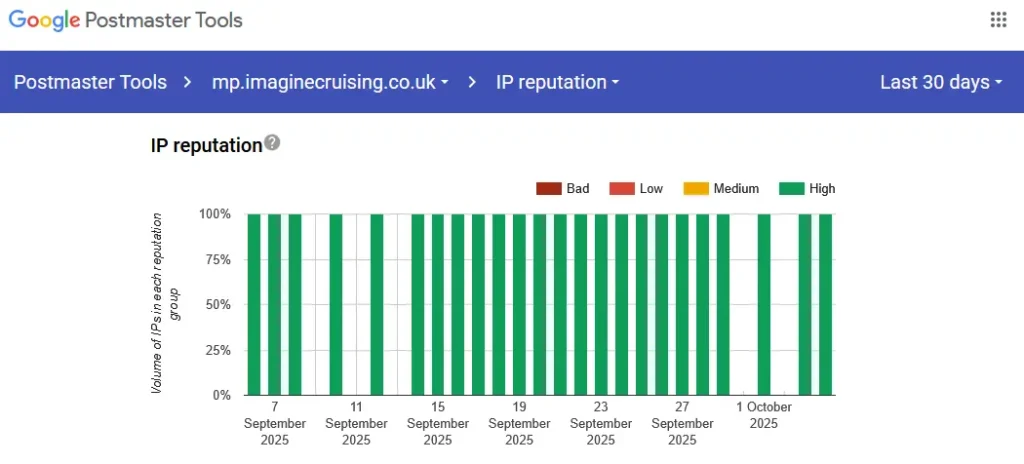
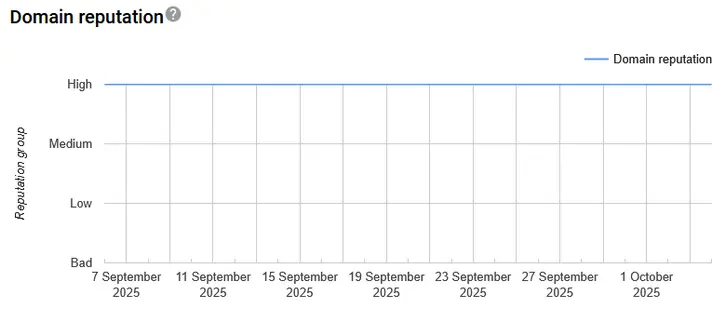
The logic seems to be that Google is showing more detail on compliance and errors, so the simple “traffic-light” overview of reputation reporting is no longer as valuable.
This situation is still avoided; Google does point out, “We will be introducing new dashboards to provide senders with even more useful and actionable information.”
Ultimately, you have to admit that Google has access to vastly more data than you and me, so if they think that “reputation” is no longer a useful or accurate metric, they’re probably onto something.
So what do I do now?
Get involved! If you don’t have a Gmail account of your own, set one up for your marketing team. Subscribe to a bunch of company newsletters, including your own, and track how click behaviour affects positioning in the Promotions tab.
The same is true for Postmaster tools; set up/upgrade to V2 and explore how your domain(s) show up.
Need a little more help?
With the Gmail update, it is becoming increasingly important for organisations to have email authentication in place.
To help our customers set up a DMARC record, we offer support in the form of help centre articles that you, as a marketer or communications specialist, can forward directly to your IT colleague.

